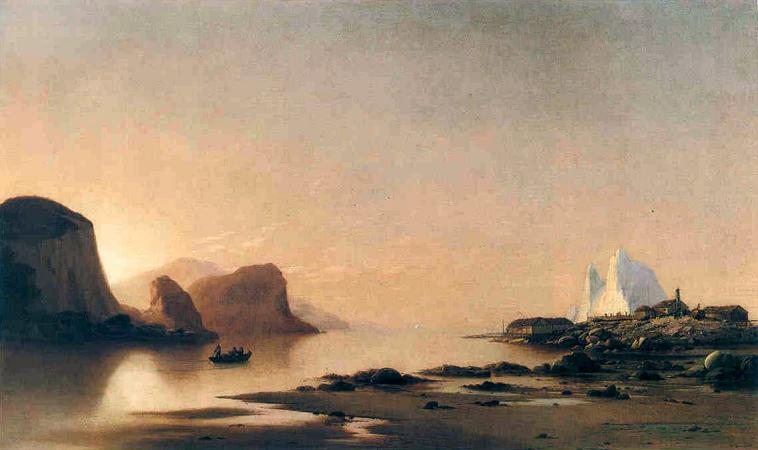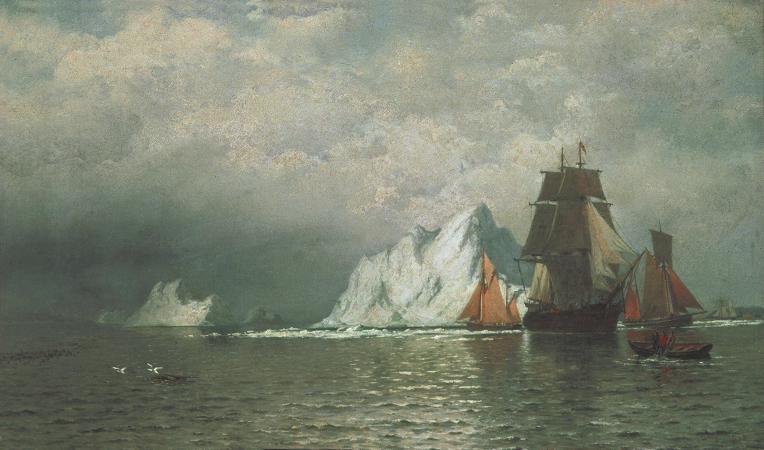Labrador. Labrador is a geographic and cultural region within the Canadian province of Newfoundland and Labrador. It is the continental portion of the province and constitutes 71% of the province's area but is home to only 6% of the province's population. It is separated from the island of Newfoundland by the Strait of Belle Isle. It is the largest and northernmost geographical region in Atlantic Canada. Labrador occupies most of the eastern part of the Labrador Peninsula. It is bordered to the west and the south by the Canadian province of Quebec. Labrador also shares a small land border with the Canadian territory of Nunavut on Killiniq Island. The aboriginal peoples of Labrador include the Northern Inuit of Nunatsiavut, the Southern Inuit-Métis of Nunatukavut, and the Innu. Many of the non-aboriginal population in Labrador did not permanently settle in Labrador until the natural resource developments of the 1940s and 1950s. Before the 1950s, few non-aboriginal people lived in Labrador year-round. The few European immigrants who worked seasonally for foreign merchants and brought their families were known as settlers. Labrador is named after João Fernandes Lavrador, a Portuguese explorer who sailed along the coasts of the Peninsula in 1498-99. Lavrador in Portuguese means farmer, as does its Spanish equivalent labrador. Labrador has a roughly triangular shape that encompasses the easternmost section of the Canadian Shield, a sweeping geographical region of thin soil and abundant mineral resources. Its western border with Quebec is the drainage divide of the Labrador Peninsula. Lands that drain into the Atlantic Ocean are part of Labrador, while lands that drain into Hudson Bay are part of Quebec. Northern Labrador's climate is classified as polar, while Southern Labrador's climate is classified as subarctic. Labrador can be divided into four geographical regions: the North Coast, Central Labrador, Western Labrador, and the South Coast. Each of those regions is described below. From Cape Chidley to Hamilton Inlet, the long, thin, northern tip of Labrador holds the Torngat Mountains, named after an Inuit spirit believed to inhabit them. The mountains stretch along the coast from Port Manvers to Cape Chidley, the northernmost point of Labrador. The Torngat Mountain range is also home to Mount Caubvick, the highest point in the province. This area is predominantly Inuit, with the exception of a small Innu community, Natuashish. The North Coast is the most isolated region of Labrador, with snowmobiles, boats, and planes being the only modern modes of transportation. The largest community in this region is Nain. Nunatsiavut is an Inuit self-government region in Labrador created on June 23, 2000. The Settlement area comprises the majority of Labrador's North Coast, while the land-use area also includes land farther to the interior and in Central Labrador. Nain is the administrative centre. Central Labrador extends from the shores of Lake Melville into the interior. It contains the Churchill River, the largest river in Labrador and one of the largest in Canada. The hydroelectric dam at Churchill Falls is the second-largest underground power station in the world. Most of the supply is bought by Hydro-Québec under a long-term contract. The Lower Churchill Project will develop the remaining potential of the river and supply it to provincial consumers. Known as the heart of the Big Land, the area's population comprises people from all groups and regions of Labrador. Central Labrador is also home to Happy Valley-Goose Bay. Once a refuelling point for plane convoys to Europe during World War II, CFB Goose Bay is now operated as a NATO tactical flight training site. It was an alternate landing zone for the United States' Space Shuttle. Other major communities in the area are North West River and the large reserve known as Sheshatshiu. The highlands above the Churchill Falls were once an ancient hunting ground for the Innu First Nations and settled trappers of Labrador. After the construction of the hydroelectric dam at Churchill Falls in 1970, the Smallwood Reservoir has flooded much of the old hunting land, submerging several grave sites and trapping cabins in the process. Western Labrador is also home to the Iron Ore Company of Canada, which operates a large iron ore mine in Labrador City. Together with the small community of Wabush, the two towns are known as Labrador West.
more...






